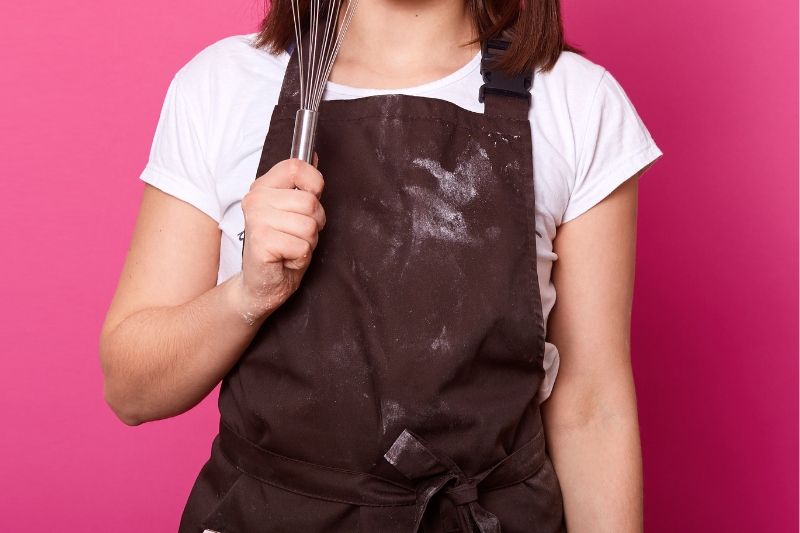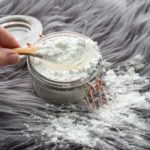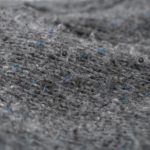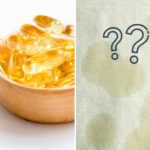We’ve all been there. We’re busily baking away when – oh no! – we trip up on our slightly too big Bob the Builder slippers and we face plant in the flour. No? Just me then.
Ok, I bet you’ve had a non-cartoon-footwear-related flour mishap, and wondered just what you do with that flour that’s now all over your front.
Fear not. This article will give you the plain flour truth, spelt out for you, and will leave your mood going through some serious self-raising.
At the end of the day, there’s no need to make a wholemeal out of it if you just use your loaf. OK, that’s the bun – er, pun – section over with. On with the advice.
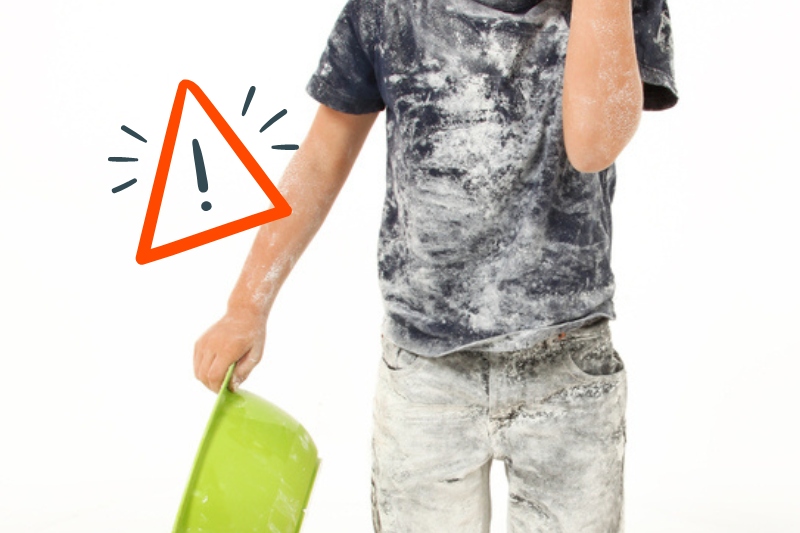
Step 1 – Shake
The first thing you should do is go nowhere near the washing machine. If you decide straight away to pop your floury clothes in that tumbling temptress you’ll end up with gloopy garments in no time, and they’ll be very tricky to get clean thereafter.
So, what you do is this. Shake those suckers. It’s a good idea to do this outside, unless you want your house to have that dusted with snow/dandruff look.
To really get rid of that flour, try whacking your clothes against a handily positioned wall.
Make sure you’re not letting flour drift onto any laundry you’ve got drying out there, or onto any pets. They may not appreciate a light powdering.
You can also use a dry non-porous sponge or stiff brush to give your clothes a good going over.
Be careful if you’re dealing with delicate fabrics, of course. Don’t be using a steel brush on a light filigree lacework veil, for instance.

Step 2 – Rinse
Once you’ve got all that excess flour out, you can move to the second stage, which involves a cold tap and a bit of patience.
Run your garment under cold water for a little while. If luck’s on your side, the water will be running clean in no time and you can be reasonably sure of flour-free clothing going forward.

Step 3 – Wash
Although you’ve got pretty much all of it out, it’s a good idea to make sure that the flour’s well and truly gone by giving those clothes a session in the washing machine.
Use the normal cycle, together with normal detergent. No magic here.
One tip though – don’t wash your baking clothes with any other laundry. Just in case there’s a hidden cache of flour that’s just waiting to leap out like Grecians from a Trojan horse and wreak havoc among all those innocently by-standing items of clothing.
Once the wash is over and the clothes are all clean, leave them outside to dry if you can.
If, however, you find to your unbridled horror that some flour had indeed been allowed to remain and is now sat in place like a giant gluey blob from a 50s B-horror, then you’ll need to move with all haste to the next section. And good luck.
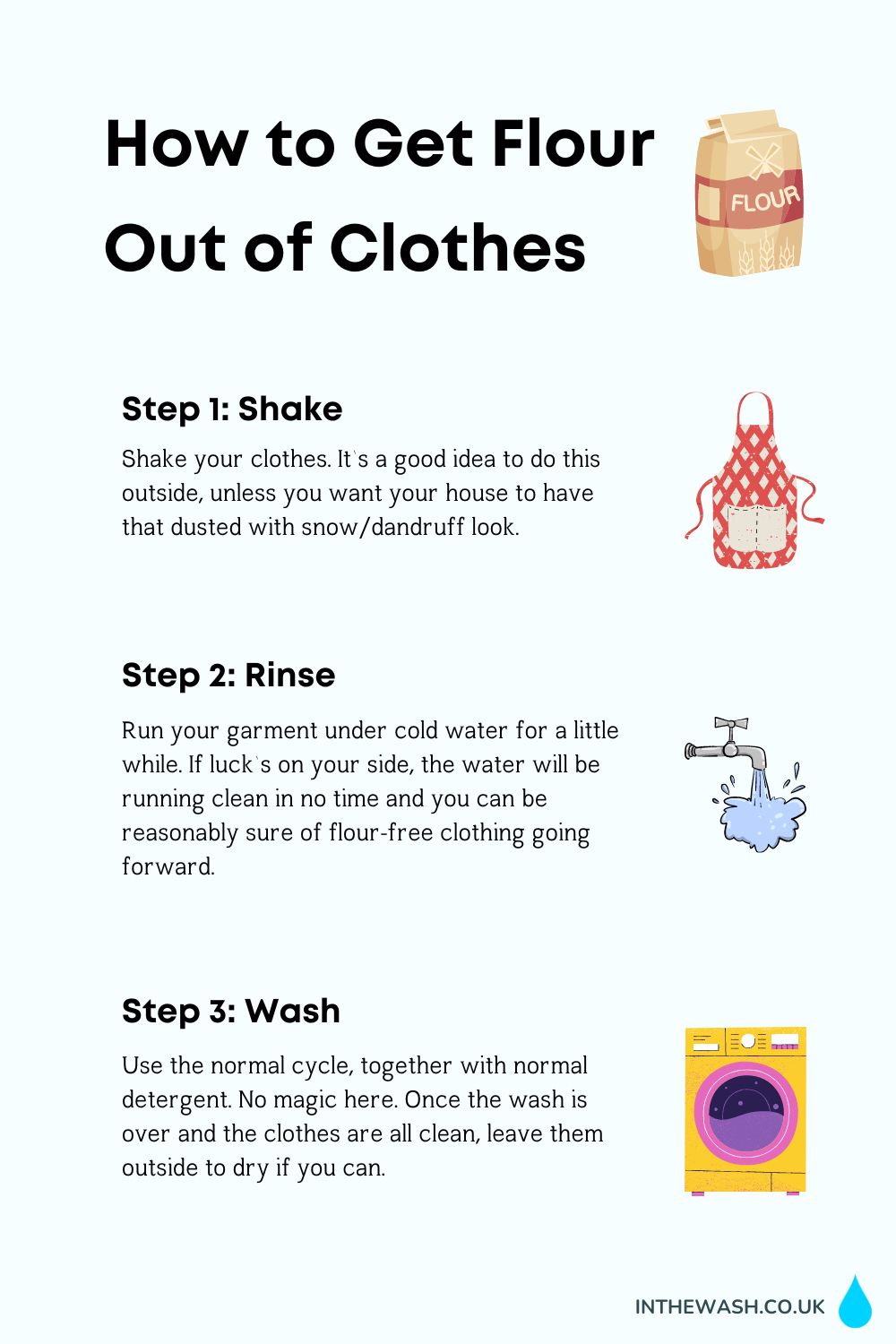
What to Do with Wet Flour
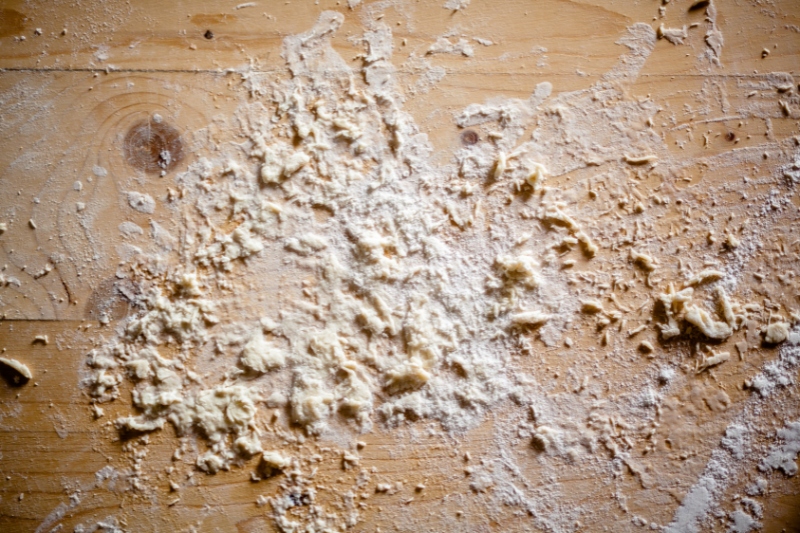
Doh! You may cry. You actually mean dough! Because this is what you’re dealing with. And it’s much harder to cope with than dry flour, because, as any baker or homemade adhesive adherent will tell you, flour plus water doesn’t just mean dough. It also equals glue.
So, what you have is a very sticky mess, clinging to your clothes like a desperado, intent on ruining your clothes and your day.
What can you do to rid yourself of this unwanted unguent? What you do is get a tub of lukewarm water and soak the affected clothes for a couple of hours at least. This leaves you plenty of time to check out some new baking recipes.
Hopefully, the warm water will dissolve the flour and most of it will leech out of the clothing. Any sticky survivors can hopefully be gently peeled off.
For downright determined doughy dollops, pop in a few drops of fabric softener and leave for a little longer. Another good tip is to put salt on a cloth and rub it over the worst bits.
Then wash in the machine as normal, again isolating from other clothes. Dry and rejoice. And perhaps say a little thank you to Hestia, the Greek Goddess of Baking. You never know – she might stop it happening at all next time if you give her a little attention now.
Why Does Flour Go Gloopy?
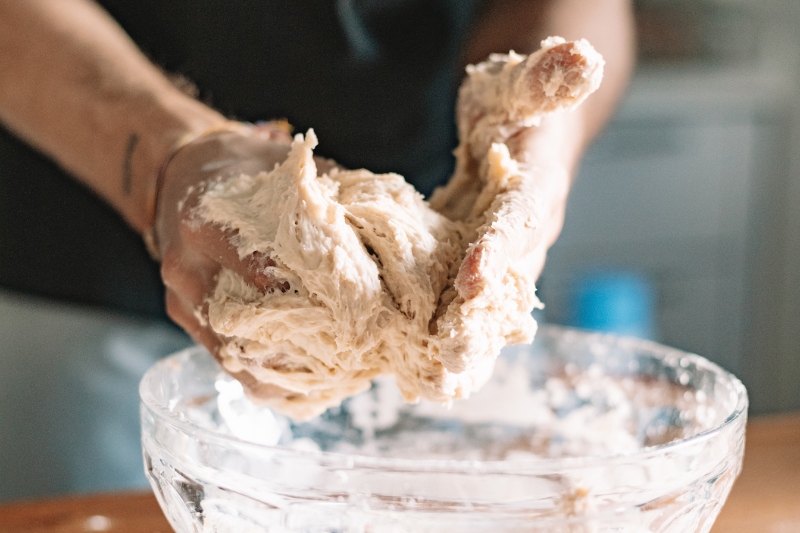
So, it has to be asked. What makes flour – such an innocuous, benign, even kindly – substance such a menace the moment it gets moist?
Well, the very same property that lends itself so well to breadmaking is what propels it to mischief-making when the opportunity arises.
Gluten’s where the peril’s at. Those who are intolerant of it know all about how dangerous it can be in certain stomachs. And we should all be very wary of getting this stuff where it has no business going.
Gluten’s a protein that’s found in wheat, barley and rye, and it has one big purpose in life: to bind things incredibly well.
Such togetherness would be welcome in, say, a multi-denominational church, but it’s wholly undesired when applied to your clothes or any ideally non-sticky environment.
Luckily, as we’ve seen, there are ways to deal with it when it starts its all-inclusive antics.
Flour Power
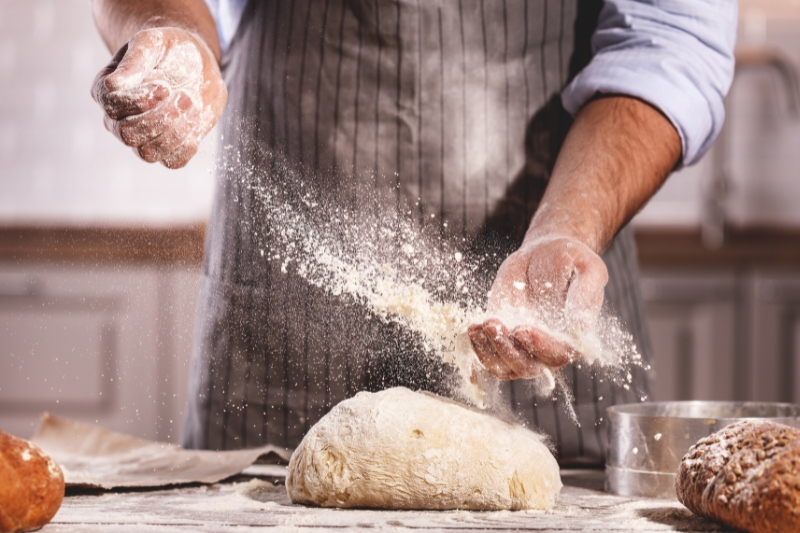
So, now you know what to do if everything gets floured-up. The main thing to remember is not to do the automatic thing: don’t stick your clothes in the washing machine straight away.
Apply some thought, do the shake and soak and then you can wash them. This will result in gloriously gluten-free gear, from aprons to anything else you happen to be wearing.
So, the next time everything turns white, I do hope you use this advice. It contains more than a grain of truth.

Martin’s life revolves around films, dogs and food, but rarely all at the same time. At least two out of these three like to give clothes and furniture a hard time, and Martin enjoys discovering and writing about new ways to stop them doing their worst.
